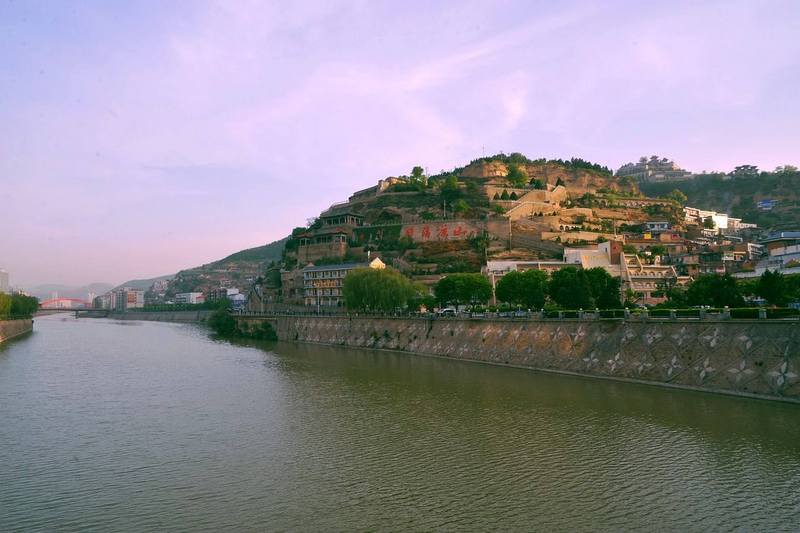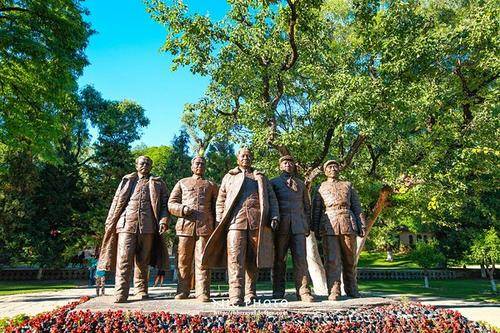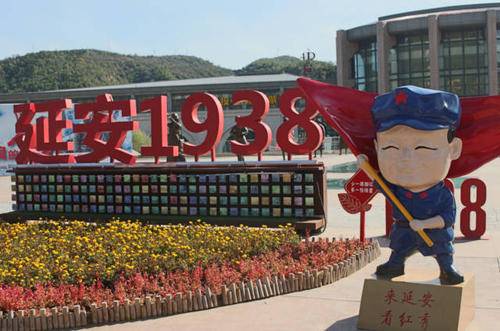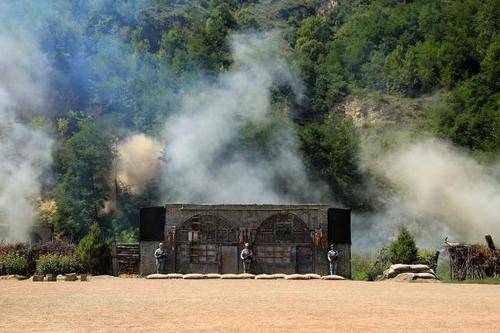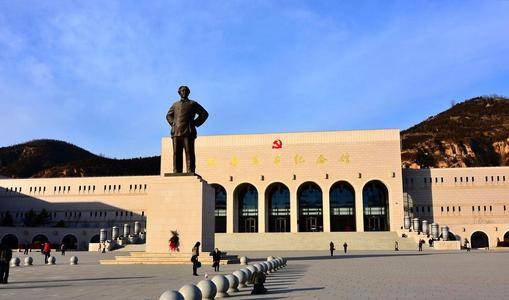Zaoyuan was the location of the Secretariat of the Central Committee of the Communist Party of China. It is situated 8 kilometers northwest of Yan'an city. Originally, it was a landlord's manor, appearing more upscale than Yangjialing and Wangjiaping, and was also known as the 'Zhongnanhai of Yan'an.' The CCP's office in Yan'an was located here, which was the site of the CCP's Social Department, later renamed 'Yanyuan.' The stone pillars on both sides of the old site's gate still bear the inscriptions of Kang Sheng's work 'Yanyuan.'
Shaanbei storytelling is a very important traditional form of storytelling in the Shaanbei region, popular in northern Shaanxi Province, including Yan'an and Yulin. Initially, it was performed by poor blind people using Shaanbei folk tunes to sing legends and stories. Later, it absorbed melodies from Meihu, Qinqiang, Daoqing, and Xintianyou, gradually forming Shaanbei storytelling. The performance style of Shaanbei storytelling involves artists holding a sanxian or pipa, playing and singing simultaneously, alternating between storytelling and singing. It is divided into two types: 'Sanxian Storytelling' and 'Pipa Storytelling'. After reforms by folk artists like Han Qixiang, one person can simultaneously play five instruments: a large sanxian or pipa, bangzi, shua ban, a rhythm wood piece called 'mazhaza', and a small gong or cymbals.
On March 13, 1947, Hu Zongnan, the commander of the First War Zone of the Kuomintang, led 34 brigades with 250,000 troops to launch a major offensive against Yan'an. Under the leadership of the Central Committee of the Communist Party of China and Chairman Mao, General Peng led the Northwest Field Army and three local brigades, totaling 25,000 people, to fight three major battles (Qinghuabian, Panlong Town, and Yangma River). After a year of fierce fighting and three major victories, they achieved a decisive victory in the Yan'an Defense War.
The Yan'an Revolutionary Memorial Hall, completed in January 1950, was originally located at the junction of Nanguan. It is one of the earliest places to establish a museum after the founding of the People's Republic of China. In 1954, it was relocated to the former site of the Central Committee of the Communist Party of China in Yangjialing and renamed 'Yan'an Museum'. In 1955, it was moved to the old site at the foot of Phoenix Mountain and renamed 'Yan'an Revolutionary Memorial Hall'. In June 1973, it was relocated to its current site in Wangjiaping. Above the main entrance of the hall hangs a red plaque with the name of the hall inscribed by Guo Moruo during his visit to Beijing in 1971.
Baota Mountain
The terrain of Yan'an can be summarized as 'embracing three mountains and carrying two rivers.' The three mountains refer to Baota Mountain in the southeast of Yan'an, Qingliang Mountain in the northeast, and Phoenix Mountain in the west. The two rivers are the Nanchuan River, originating 45 kilometers southeast of Yan'an in Nanniwan, and the Yan River, which is 268 kilometers long and flows through the entire Yan'an city from Wuqi County. The two rivers converge at the foot of Baota Mountain, turn eastward for 90 kilometers, flow through Yanchang, and finally merge into the Yellow River. Standing on Baota Mountain, one can have a panoramic view of Yan'an.
